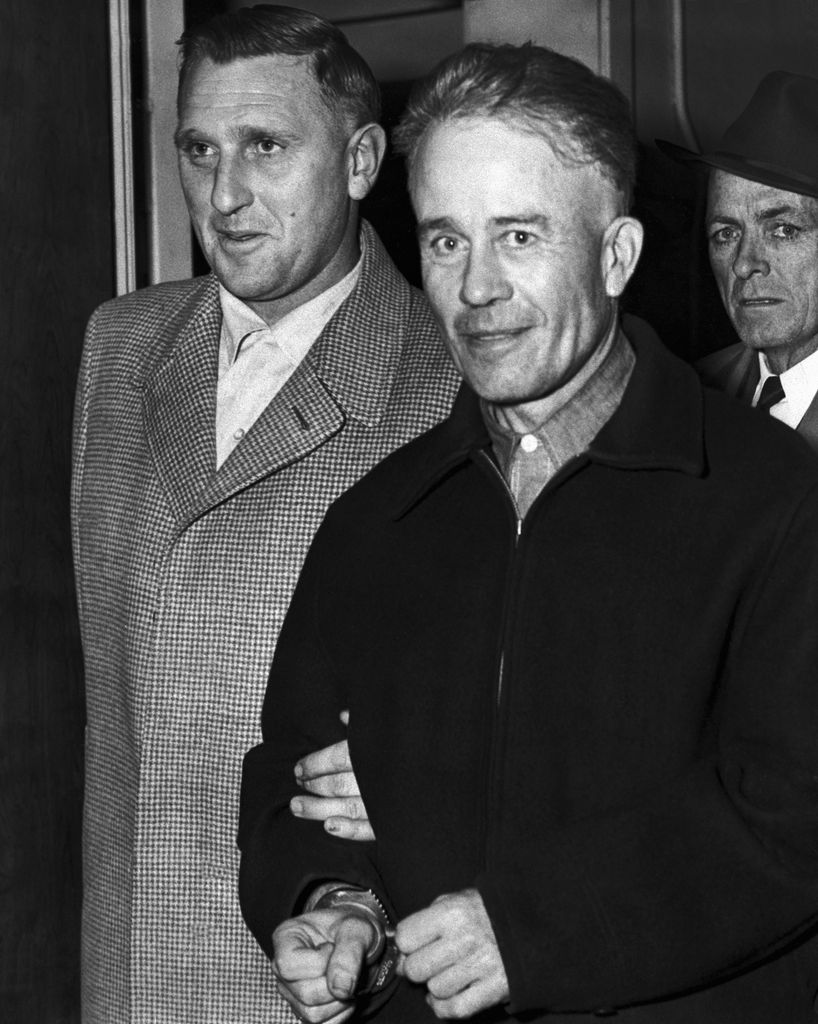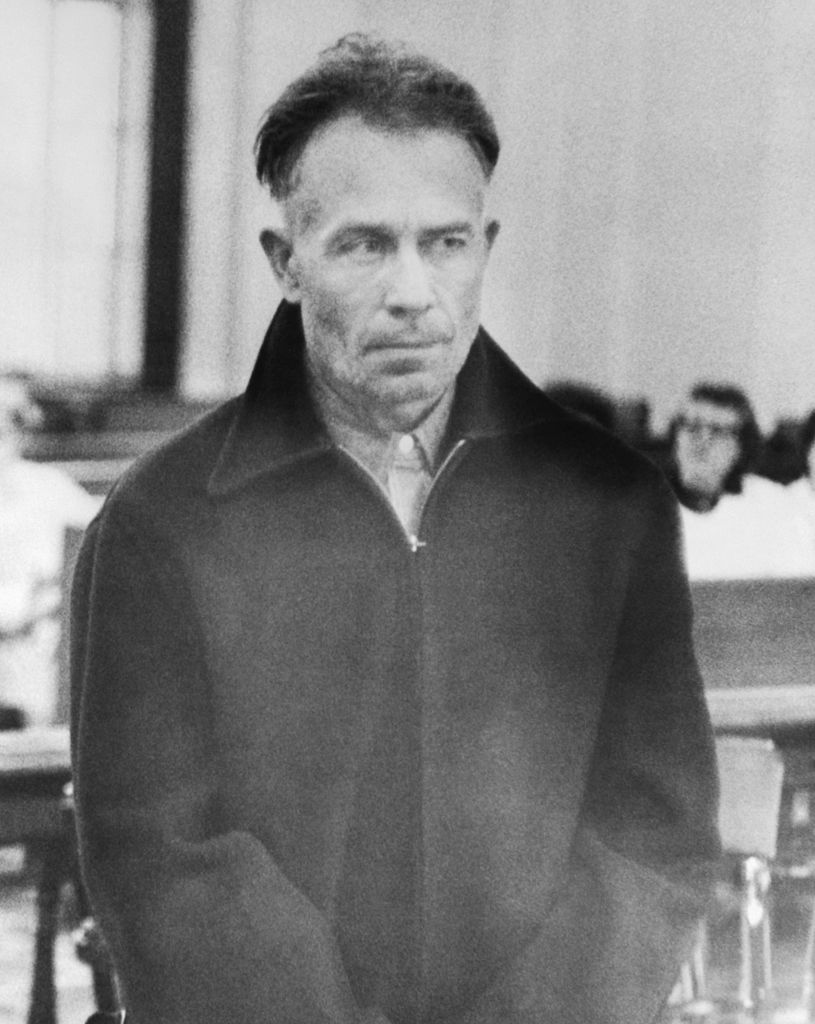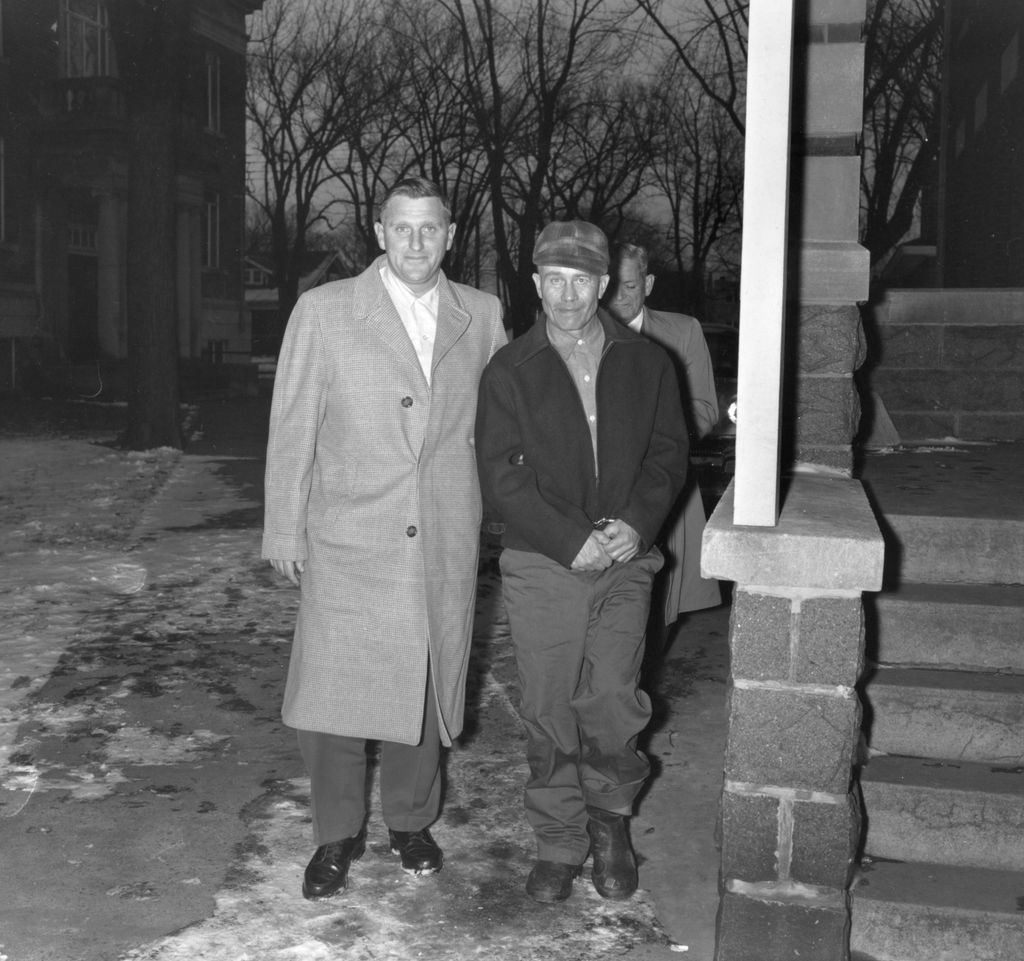
While Gein admitted to killing two women and stealing the bodies from nine graves, it was suspected that he’d committed further murders, which went unsolved in Wisconsin. Here’s what we know about the extent of Gein’s harrowing crimes…
What did Ed Gein do?
Gein was convicted of the murder of Bernice Worden, a 58-year-old cashier who owned a hardware store in Plainfield. After she was reported missing on November 16, 1957, Worden’s son, Deputy Sheriff Frank Worden, voiced his suspicions about Gein, who had visited the store just one day before. When police arrived at Gein’s farmhouse, however, they were horrified to discover a deceased Worden, not to mention several mutilated body parts, some of which had been used to construct masks and suits made entirely out of skin.
 © Bettmann Archive
© Bettmann ArchiveQuestioned for his crimes, Gein admitted to killing two women: Worden and 54-year-old Mary Hogan, a tavern owner who had been missing for three years. While Gein confessed and was charged with killing both Worden and Hogan, he was unable to stand trial for their murders in 1957. Diagnosed with schizophrenia and declared mentally unfit, it was not until 1968 that Gein, who had been sent to the Central State Hospital for the Criminally Insane, was tried in court.
Why was Ed Gein only convicted of one murder?
 © Bettmann Archive
© Bettmann ArchiveDespite confessing to the murders, Gein was only charged with the murder of Worden. While an initial trial found him guilty, a second, held in 1968, found him not guilty by reason of insanity. As a result, he was never convicted of Hogan’s murder, nor of graverobbing (via USA Today).
Gein’s close relationship with his mother, Augusta Wilhelmine Gein, has been well-documented. A domineering and intensely religious woman, Augusta was described in a 1957 Times article as “the undisputed head” of the family, which also included George Gein, Ed’s alcoholic father, and Henry Gein, his older brother, who was mysteriously found dead.
 © Bettmann Archive
© Bettmann ArchiveFollowing the deaths of George in 1940 and Henry in 1944, Gein was left to take care of his mother at their farmhouse. According to Biography, after she died from a stroke on 29 December 1945, Gein began closing off rooms inside the farmhouse and preserving them as a shrine to Augusta.
It was widely reported that Gein had wanted to become a woman, owing to his connection to his mother, and thus began digging up corpses and wearing women’s skin. After Worden’s death, Gein was said to have told officers that she’d reminded him of his mother.
What happened to Ed Gein?
 © Bettmann Archive
© Bettmann ArchiveFollowing his trial, Gein was sent to the Mendota Mental Health Institute in Wisconsin, where he lived out the rest of his days. Gein died from respiratory failure on July 26, 1984, after receiving a lung cancer diagnosis. He was 77 years old.



